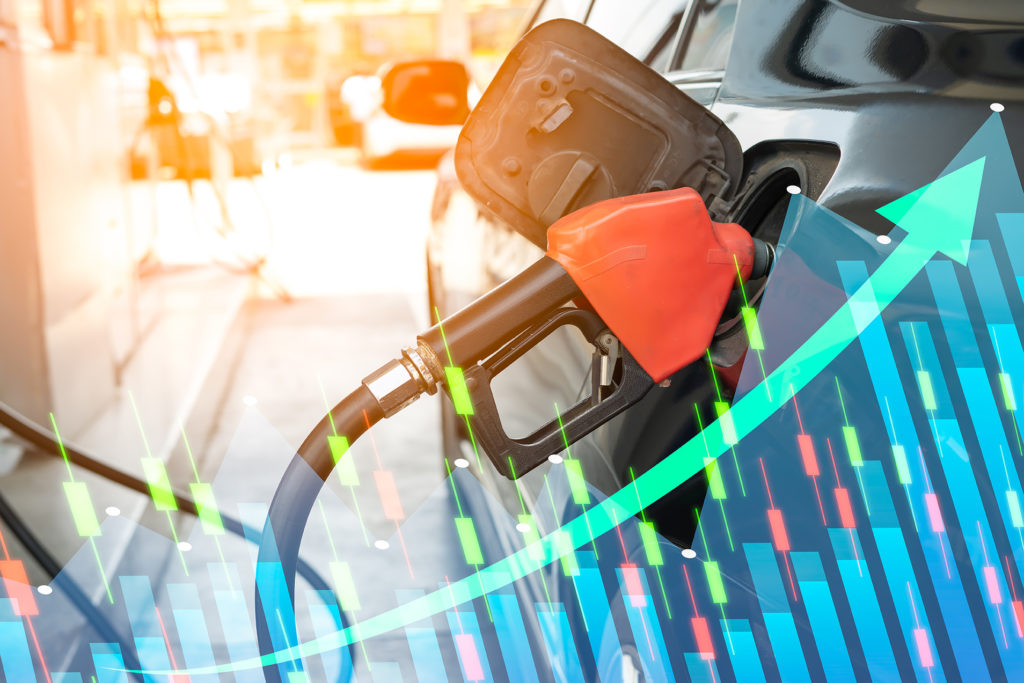Rapidly rising fuel costs are the driving force behind the current cost of living crisis. Demonstrations across the country are demanding that the Government take decisive action.
In this article, we look at what can be done to help UK motorists that rely on being on the road. The question concerning most vehicle owners is: how much higher can they go?
The State of Fuel Prices in 2022
Our commercial vehicle insurance clients will know only too well that the average cost of a litre of petrol at UK forecourts jumped from 174.8p to 191.4p last month. As reported in The Times this was the biggest increase since records began in 2000. The rise has added more than £9 to the cost of filling a typical 55-litre petrol car.
As we know, prices aren’t just rising in the UK. They are increasing worldwide. A major reason is that petrol supplies are becoming harder to obtain as companies cut ties with Russia following the invasion of Ukraine.
Fuel prices were already high before the Russian invasion of Ukraine, but the war has exacerbated the situation. Russia was the world’s second-largest crude oil exporter, behind only to Saudi Arabia.
However, the war isn’t wholly responsible for the substantial price increases. As covered in previous editions of The Plan Blog, retailers have been accused of being quick to increase their prices when costs go up and reticent to decrease them again when costs lower. This trend is attributed as a major reason why the cost of petrol at the pump doesn’t always directly mirror the global movement of wholesale prices.
Wholesale prices are governed by a variety of changing and volatile factors. These include the global price of crude oil, supply and demand, oil refinery production, the pound-to-dollar exchange rate, distribution costs and fuel duty charged by the Government.
The RAC has publicly accused retailers of failing to pass wholesale price decreases to customers. The high prices could effectively make regular car use in lower-income households unaffordable and severely impact the likes of taxi drivers who earn their living driving. This can only damage the UK economy in the long-term; surely something must be done?
Breaking Down the Cost of UK Unleaded Petrol
Roughly speaking the money you spend on the average litre of petrol is accounted for in the following ratios:
1) Wholesale Purchase Costs 45% – determined by the price of a barrel of oil. Oil is sold in US dollars so the strength of the pound is a significant factor.
2) Biofuel Content 7% – the cost of making fuel more eco-friendly
3) Retailer Profit Margins 6% – the RAC estimate the cut sellers take at garages and supermarkets
4) Delivery and distribution costs 1% – paid for taking the fuel from A to B
5) Fuel duty 28% – the specific government tax on fuel
6) VAT 20% – added on top of product-specific taxes
Will the Government Take Action?
Easing this crisis will require more action than just sticking it to ‘big oil’; it has been widely reported that people are now limiting car use to keep their costs down. Others have claimed that they have quit jobs over escalating commuting costs. It’s a deeply worrying situation for regular working people with families to feed.
Jamie Wiseman, a 31-year-old mechanic from Scotland, believes that responsibility lies with the government to make petrol prices reasonable. Wiseman was responsible for creating the Facebook group “Stand up to Fuel Prices UK Wide” at the start of last month. Within days, 20,000 people had joined his mission on Facebook.
Wiseman then created an event on his page, calling for nationwide protests. Close to 58,000 joined. This resulted in key roads and motorways being targeted across the country on Monday.
The protest mirrors similar protests over fuel costs in the autumn of 2000, under Tony Blair’s government. “It’s been a wee bit mental, but hopefully, it will be worth it,” Wiseman said to The Times. The Scottish business owner says that demonstrations will continue until the government addresses the issue.
Despite the incredible groundswell of support for Wiseman’s campaign, industry figureheads and politicians haven’t given the protests the attention or action they deserve. The activist fears that further and further measures will have to be taken. “The fuel price hasn’t come down, so it’s not had the effect it needs to have yet. So, there will be more protests. I think it needs to be bigger before the government takes any notice.” Wiseman commented.
What is Actually Being Done?
The Government cut fuel duty for petrol and diesel by 5 pence per litre across the whole of the UK for 12 months, which took effect from the 23rd of March 2022. This news would have pleased our motor trade clients as well as private hire drivers whose incomes are particularly sensitive to fuel costs. However, many believe that the fuel duty cut doesn’t appear to have been passed through to forecourt prices.
Business Secretary Kwasi Kwarteng has told petrol bosses that the competition regulator is monitoring the situation. Retailers have countered that their costs have remained high, with the Petrol Retailers Association saying margins are: ‘often not enough to cover operating costs.’
It is also unacceptable that different locations even within the same retail chain have widely different prices. Kwarteng says that regulators will not hesitate to use their powers to act against petrol stations if there is evidence that they are infringing competition or consumer law.
Yet, the breakdown of the cost of unleaded petrol shown above illustrates that the Treasury takes home almost half of what you pay at the pump for a litre via a combination of VAT and fuel duty. With the Chancellor’s VAT income increasing in line with the exponential fuel cost rises, surely a cut in the percentage amount charged would be the most effective method of reducing costs for consumers and preventing the crisis strangling the UK’s economic growth?
Though the existing fuel duty cut, and the business secretary’s words are encouraging, more serious action needs to be taken soon. With the Conservative Party caught up with its ongoing leadership battle the prospect of immediate action seems unlikely.
Early front runner Penny Mordaunt had gained traction with her promise to cut VAT on fuel in half, from 20% to just 10%. However, she was eliminated in the penultimate round of voting by Tory MPs. It remains to be seen what the final two candidates Rishi Sunak and Liz Truss will do if they prove successful in their efforts to become the next Prime Minister.


